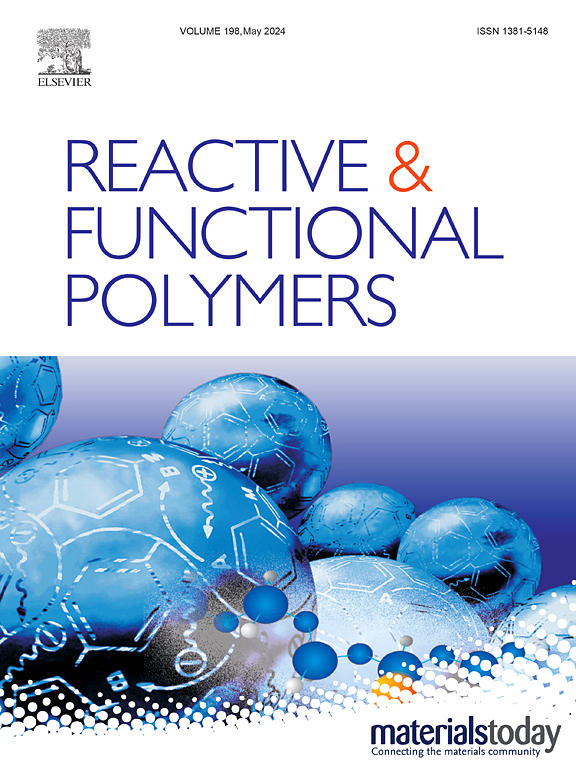膜气体分离用五苯基阶梯聚合物
IF 4.5
3区 工程技术
Q1 CHEMISTRY, APPLIED
引用次数: 0
摘要
采用化学计量不平衡促进步长聚合的方法合成了一种新型的梯形聚合物,其骨架由交替的五苯和二苯并环二烯结构单元组成。采用自加速Diels-Alder反应,建立了化学计量不平衡促进的阶梯生长聚合反应,聚合了具有五烯基的对称二苯并-1,5-环二烯-3,7-二炔(DIBOD)和双对醌类单体对。这种化学计量不平衡促进的阶梯生长聚合可以在温和加热和无催化剂的条件下进行。所得阶梯聚合物具有刚性和扭曲的大分子结构,这使得阶梯聚合物具有0.4 ~ 1.4 nm的固有微孔隙度和618 m2/g以上的高比表面积。这些新型阶梯聚合物形成的膜对H2/N2、H2/CH4、He/N2和CO2/CH4等多种气体对具有良好的气体分离性能。本文章由计算机程序翻译,如有差异,请以英文原文为准。

Pentiptycene-based ladder polymers for membrane gas separation
A new type of ladder polymers was synthesized by a stoichiometric imbalance-promoted step-growth polymerization method to have the backbones composed of alternative pentiptycene and dibenzocyclooctadiene structural units. The stoichiometric imbalance-promoted step-growth polymerization was developed using a self-accelerating Diels-Alder reaction to polymerize the monomer pairs of sym-dibenzo-1,5-cyclooctadiene-3,7-diyne (DIBOD) and bis-ortho-quinone compounds with pentiptycene groups. This stoichiometric imbalance-promoted step-growth polymerization could be performed under mild heating and catalyst-free conditions. The resulting ladder polymers had rigid and contorted macromolecular structures, which endowed the ladder polymers with intrinsic microporosity of pore sizes between 0.4 and 1.4 nm and high specific surface areas above 618 m2/g. The membranes formed by these novel ladder polymers behaved good gas separation performance for many gas pairs such as H2/N2, H2/CH4, He/N2, and CO2/CH4.
求助全文
通过发布文献求助,成功后即可免费获取论文全文。
去求助
来源期刊

Reactive & Functional Polymers
工程技术-高分子科学
CiteScore
8.90
自引率
5.90%
发文量
259
审稿时长
27 days
期刊介绍:
Reactive & Functional Polymers provides a forum to disseminate original ideas, concepts and developments in the science and technology of polymers with functional groups, which impart specific chemical reactivity or physical, chemical, structural, biological, and pharmacological functionality. The scope covers organic polymers, acting for instance as reagents, catalysts, templates, ion-exchangers, selective sorbents, chelating or antimicrobial agents, drug carriers, sensors, membranes, and hydrogels. This also includes reactive cross-linkable prepolymers and high-performance thermosetting polymers, natural or degradable polymers, conducting polymers, and porous polymers.
Original research articles must contain thorough molecular and material characterization data on synthesis of the above polymers in combination with their applications. Applications include but are not limited to catalysis, water or effluent treatment, separations and recovery, electronics and information storage, energy conversion, encapsulation, or adhesion.
 求助内容:
求助内容: 应助结果提醒方式:
应助结果提醒方式:


